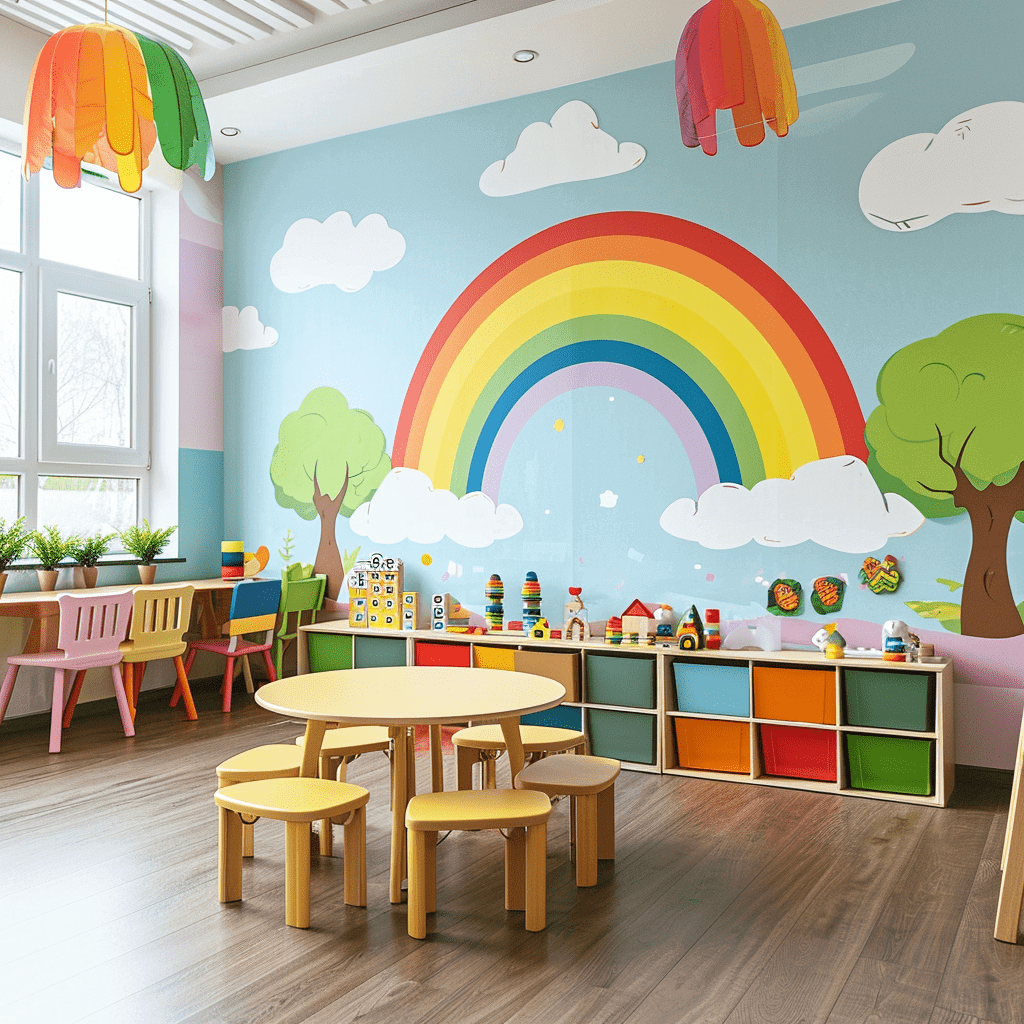Understanding the Importance of Daycare Decor
As a daycare provider, you want your space to be more than just a place for children to stay; it should feel like a home away from home. The decor you choose plays a significant role in this. It impacts how children interact, learn, and grow. When I first opened my daycare, I realized that the right decor could enhance creativity, promote a sense of security, and even make parents feel more comfortable leaving their kids with us.
Choosing a Theme for Your Daycare
Having a consistent theme can help guide your decor choices and create a cohesive environment. Here are some popular themes to consider:
1. Nature-Inspired
Earth tones, plants, and natural materials can create a soothing atmosphere. Incorporating elements like tree decals and nature murals can encourage exploration.
2. Under the Sea
This theme allows for vibrant colors and fun ocean creatures. Wall murals of underwater scenes can make your space feel adventurous.
3. Space Exploration
Use dark blues and stars to create a cosmic environment. Space-themed decor can spark children’s imaginations and encourage play.

| Theme | Color Palette | Decor Elements |
|---|---|---|
| Nature-Inspired | Earth tones, greens | Tree decals, plant pots |
| Under the Sea | Aquatic blues, bright corals | Mermaid murals, fish mobiles |
| Space Exploration | Dark blues, silvers | Star stickers, rocket ships |
Color Schemes That Inspire
Color psychology can greatly affect mood and behavior. Here are some popular color schemes for daycare spaces:

Warm Colors
Colors like yellow, red, and orange stimulate urgency and excitement. They can be used in play areas to keep children energized.
Cool Colors
Blue and green evoke calmness, which is perfect for resting areas. Using these colors can help alleviate stress for both children and caregivers.

Neutral Colors
Adding neutral colors can provide balance. Use them as a backdrop to allow vibrant decor to stand out.
Color Comparison Chart
| Color | Emotional Impact | Best Use Areas |
|---|---|---|
| Yellow | Happiness, Energy | Play areas |
| Blue | Calmness, Trust | Resting areas |
| Green | Health, Peace | Classrooms |

DIY Decor Projects for Daycare
Creating your decor can be not only economical but also a fun project. Here are some DIY ideas that have worked wonders in my daycare:
1. Hand-Painted Murals
Get the children involved in painting a mural. It’s a great way to encourage creativity and ownership of the space.

2. Felt Boards
Make interactive felt boards with different shapes, animals, and scenes. They are a hit during storytime and can be easily stored.
3. Sensory Stations
Use bins filled with rice, beans, or water beads to create sensory stations. Decorate these areas with bright colors to attract children’s attention.

Functional and Safe Decor Ideas
Safety is paramount when decorating a daycare. Here’s how to ensure your decor is both beautiful and functional:
Soft Edges and Non-Toxic Materials
Ensure all furniture and decor have soft edges to prevent injuries. Use non-toxic paint and materials in all decor elements.

Storage Solutions
Incorporate functional storage solutions that are easy for children to access. Let’s face it, clutter can make any space feel chaotic!
Easy-to-Clean Surfaces
Choose decor materials that are easy to wipe down. Opt for washable fabrics and surfaces that can withstand wear and tear.
Pros and Cons of Various Decor Materials
| Material | Pros | Cons |
|---|---|---|
| Wood | Durable, natural | Can splinter, heavier |
| Fabric | Soft, colorful | Can stain easily |
| Plastic | Lightweight, easy to clean | Not as eco-friendly |
Incorporating Educational Elements
Decor can be more than just appealing—it can also be educational. Here are some clever ideas:
Alphabet Wall
Create an alphabet wall using colorful letters that children can touch and learn from. It can serve as both decor and a learning tool.
Number Line
A number line can be painted on the floor or wall, providing a constant visual reminder of numbers and making math concepts more accessible.
Interactive Art Displays
Have a rotating display of children’s art. This not only showcases their creativity but also gives them a sense of pride in their work.
Seasonal Decor Changes
Changing decor with the seasons can keep your daycare feeling fresh and exciting. Here’s how I do it:
Spring Themes
Use pastel colors and floral designs. Incorporate nature walks into the decor with leaves and flowers gathered by the children.
Summer Vibes
Bright colors, beach themes, and ocean decor can create a fun, relaxed environment.
Fall Festivities
Incorporate autumn colors and activities, like pumpkin decorating, to celebrate the season.
Winter Wonderland
Use winter themes with snowflakes, trees, and even a cozy corner with winter books.
Frequently Asked Questions
1. What types of decor are best for infants and toddlers?
For infants and toddlers, opt for soft, inviting colors, plush toys, and safe, tactile surfaces. Keep decor low to the ground and ensure all items are non-toxic.
2. How can I choose decor that reflects diversity?
Include multicultural books, dolls, and art. Decor that represents different cultures fosters inclusiveness and teaches children about diversity.
3. What are some budget-friendly decor ideas?
DIY projects are fantastic and can be budget-friendly. Second-hand shops can also have hidden gems for decor. Plus, getting the kids involved in projects can save costs and boost morale!
4. How often should daycare decor be updated?
While you don’t need to overhaul your decor frequently, seasonal updates and occasional changes can keep the environment stimulating for the children.